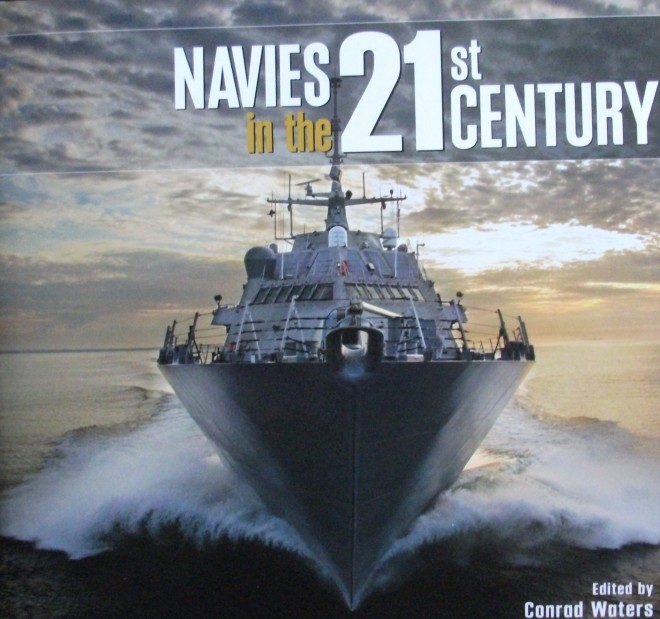
Reviewer: Michael Keith
Title: World Naval Review 2018
Editor: Conrad Waters
No. of Pages: 192
Rating Scale (1: very poor, 10: excellent): 7
______________________________
To look forwards it is sometimes necessary to look back and although its’ title suggests this volume is a review of ‘things naval’ for 2018, in fact it isn’t. Rather, by virtue of being written and published in 2017, it is a ‘forecast’ of what the editor and his associates believe will be likely to happen militarily on the world’s oceans during 2018. It is simultaneously both a review and a preview.
The volume has no Chapters per se’ but consists of four Sections which function in a similar manner. Each section deals with a specific subject (for example World Fleet Reviews; Section 2; Technological Reviews; Section 4), and within each Section subsections provide more detail about a specific part of the aforementioned section. In many instances these subsections contain even smaller sections which fulfil the same function and provide even greater detail; the subsection Singapore, which forms part of the Regional Review – Asia and the Pacific (Section 2.2) of Section 2 World Fleet Reviews, being a case in point. Within each larger Section (Chapter) the subsections follow a Section-specific numbering sequence. In Section 4 (For example), the sequence is 4.1; 4.2; 4.3 etc. Where additional information is necessary, notes are provided at the end of the individual Sections (Chapters). These are keyed to sequentially-occurring and chapter-specific numbers within the text. The previously-mentioned subsections have been contributed by a variety of authors (Eight in total), these individuals being evidently experts in their fields. The Editor has contributed an Introduction along with various articles throughout the volume. A single-page Contributors section placed after Sub-section 4.4 is the volume’s final section. Numerous photos from a variety of sources appear throughout the book, together with tables, graphs, half-tone and line drawings. No mention of their existence appears on the Contents page. Surprisingly (for a volume which presents itself as being ‘authoritative’ on its subject), there is no Index, a detail which makes searching for a specific item difficult, there being no guarantee that what is being searched-for will even be located. Such an omission is surprising and must inevitably reduce this book’s value and usefulness. Numerous acronyms are scattered throughout the volume, yet no central Glossary is provided to enable quick reference to their meanings should the need arise. Despite publication-sources being referred-to within each Section-end Notes section, there is also no stand-alone Bibliography. No Maps are provided.
While the lack of a Glossary, Maps and evidence of Photographs etc. is a cause for concern, for this reviewer, the complete lack of an Index in an otherwise authoritative and well-written volume is a major failure. The purpose of an Index is to be able to locate specific information quickly and easily, the corollary being that its absence must make information-location both slow and difficult. As already noted, searching through this volume confirms the corollary’s premise! Where quick reference could be crucial, to have to fruitlessly search through innumerable pages could, at minimum, be farcical…
The provision of an Index in future editions of this title is strongly recommended.
The Index and other limitations notwithstanding, this volume provides a comprehensive coverage of the contemporary international naval scene. On that basis it is likely to find a home on many military bookshelves, while readers with ties to the defence industry could also find it useful. Naval and aviation modellers interested in ‘modern’ naval equipment may also find that this volume of use, while civilian readers with a more general interest in naval and military matters, international relations, or ships in general, may also find it worthy of their attention. .
In precis, this is an excellent, comprehensive and well-written book. For this reviewer however, it was let down by the small but important details, especially in respect of the Index.
On a rating scale of 1-10 where 1: very poor, 10: excellent, I would give this volume a 7.
________________________________


